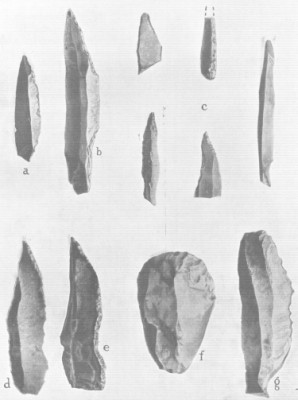Stone Age
The stone age covers a lengthy period in man's history when the most durable tools available to man were made from stone.
Eastern Essex provided a good
home for ancient man with artefacts still being discovered
throughout the area.
Historical research is still
on going with stone age finds appearing in national and local
museums such as Burnham Museum.

Items recovered include
Axe Heads - Scraping tools
- Sharp engraving tools - Boring tools - Saws with serrated edges -
Hammerheads - Arrowheads
The items date from all main
periods of the Stone age - Paleolithic, Mesolithic and Neolithic.
The main areas where items
are found include the land in
Mundon, Mayland and Steeple
surrounding Mayland and Lawling Creeks
Land adjoining the Blackwater
at St Lawrence and Bradwell
Land adjoining the Crouch at
North Fambridge, Althorne and Burnham
 Flint
implements recovered from the bed of the River Crouch
Flint
implements recovered from the bed of the River Crouch
What do we know about stone
age man?
Early man killed animals to
provide food and used skins for warmth.
While man did not cultivate
crops he made great use of vegetation occurring naturally by eating
leaves, roots and fruits.
No dairy products were
available as animals had yet to be domesticated.
From the evidence of finds we
know that Eastern Essex was a popular area for stone age man.
The area around Mayland and
Lawling Creeksea is especially rich with over 1,000 stone age items
recovered.
There is little flint to be
found in Eastern Essex which means that flint must have been carried
from other areas of Essex or even further away where it would occur
naturally.
This effort must have been
made worthwhile by the good hunting/ gathering or comparatively good
living conditions found in this area.
We know that although stone
age man was a hunter/gatherer he began to build the first houses
often no more than crude structures using trees and branches or
animal hides to provide a rudimentary shelter form the elements.
Sadly these forms of
habitation have left few traces which mean that the stone tools
provide the best clues as to areas that early man lived and hunted.



